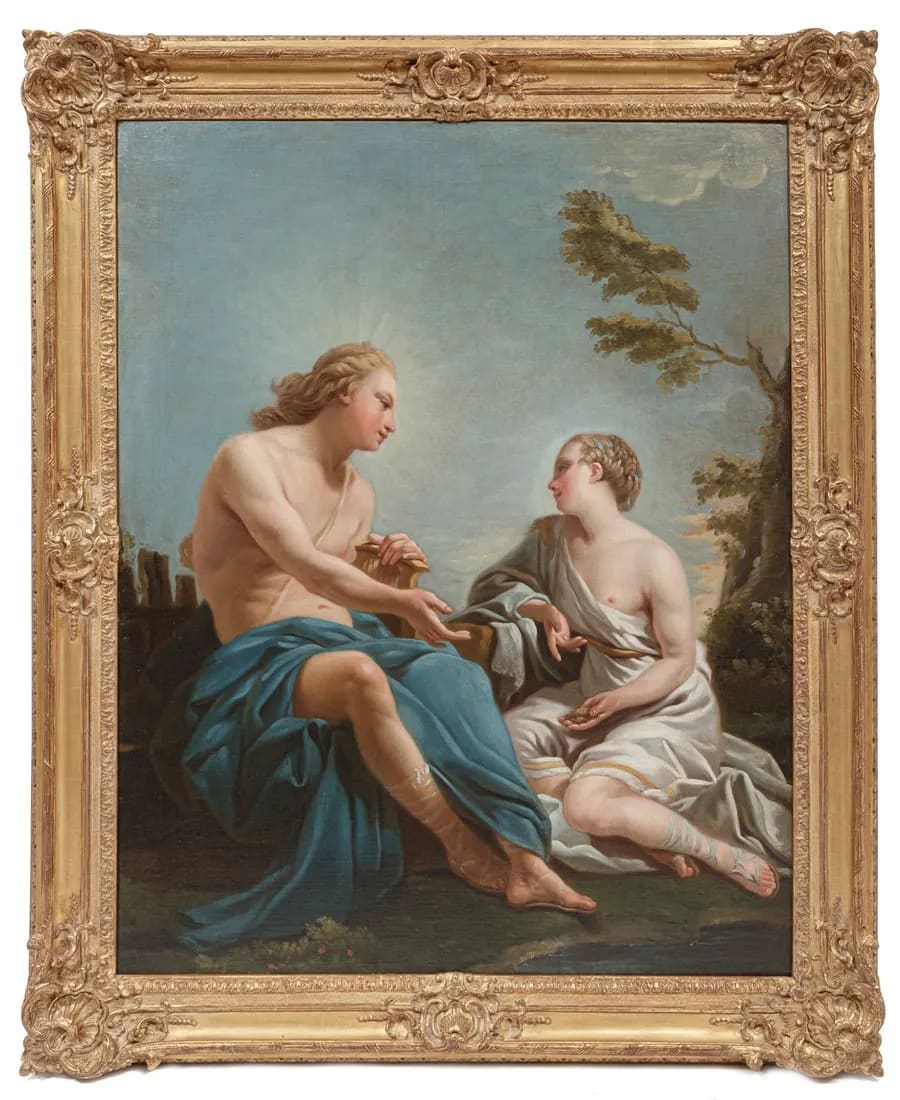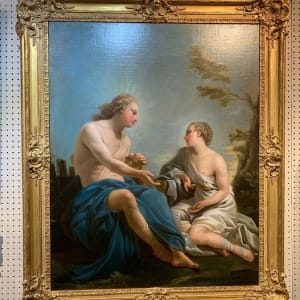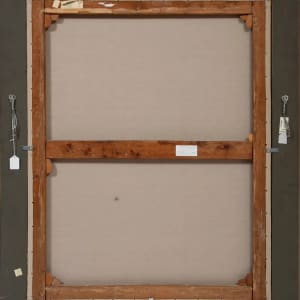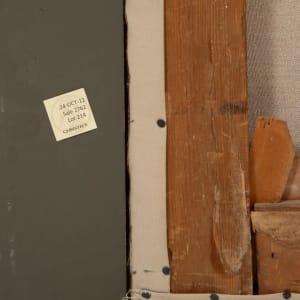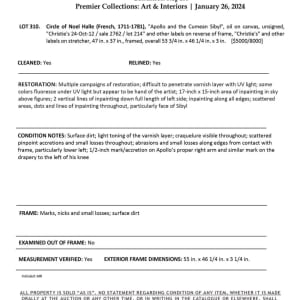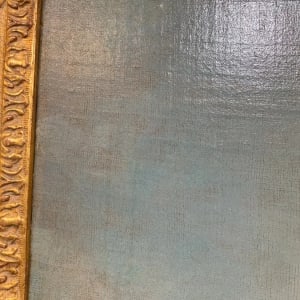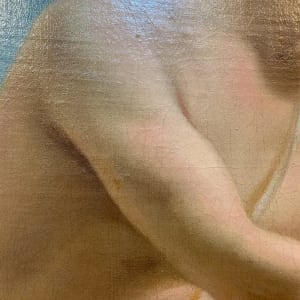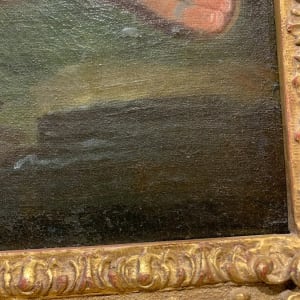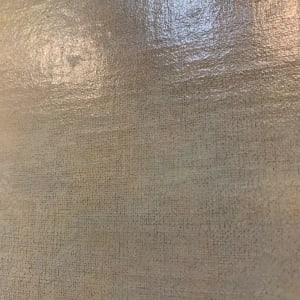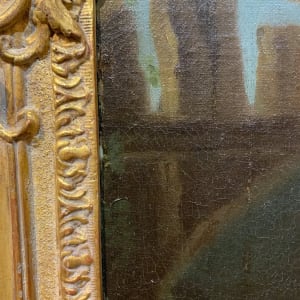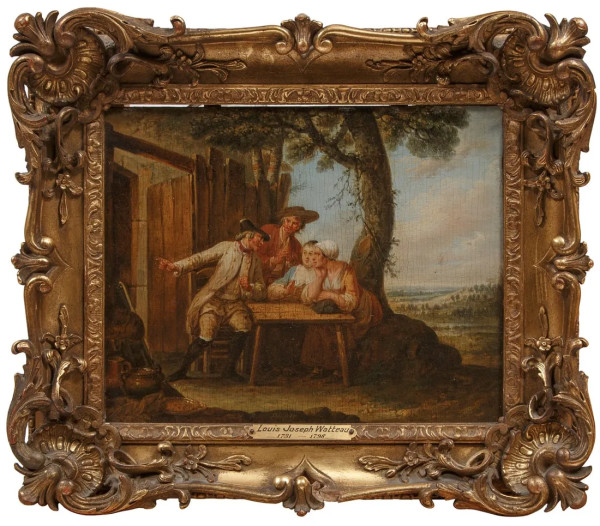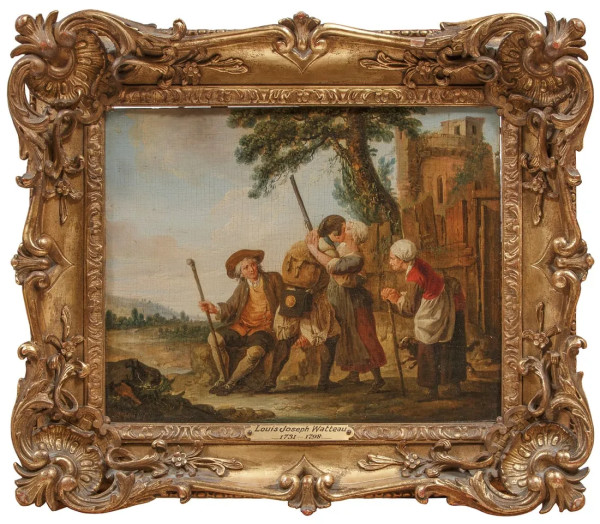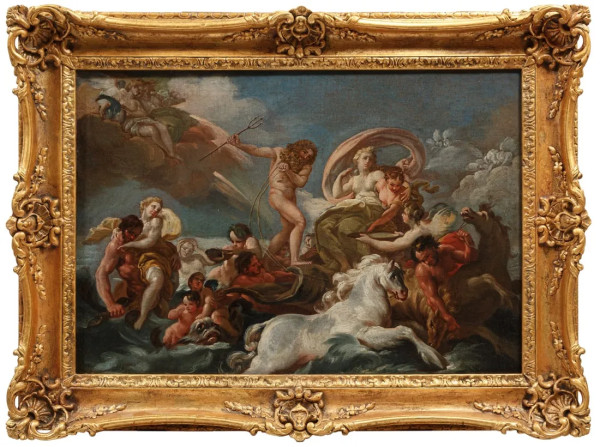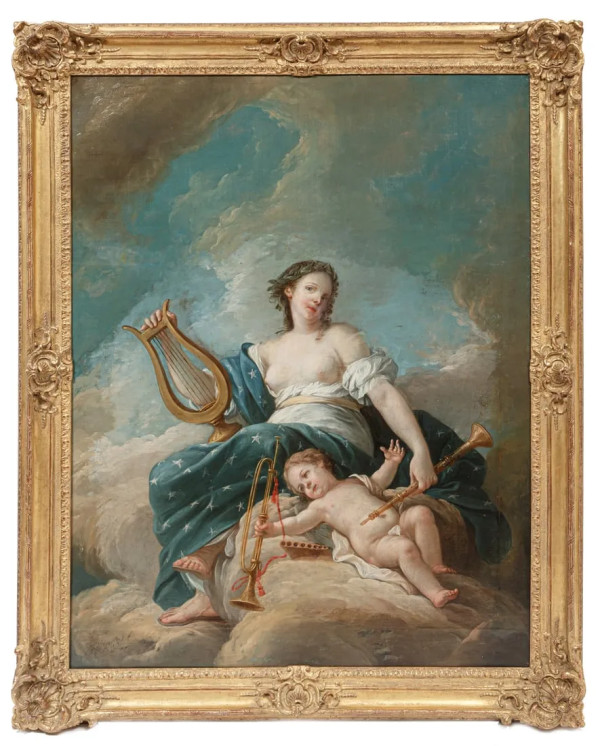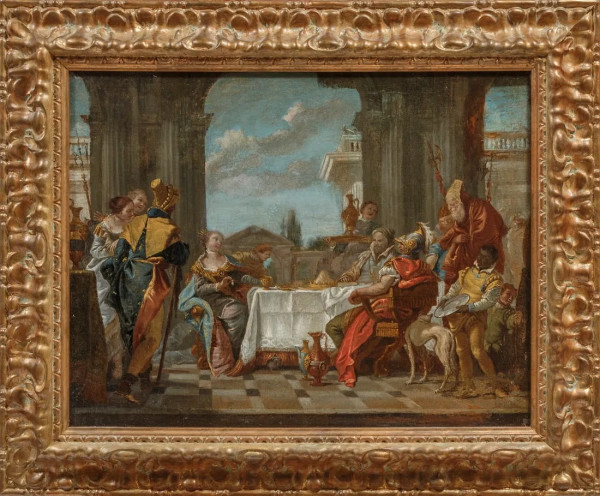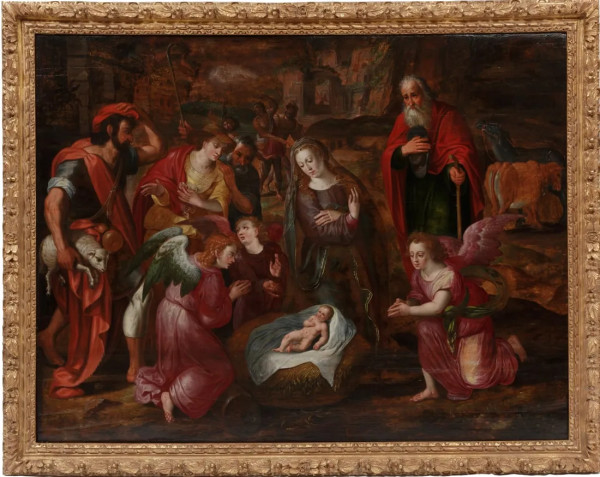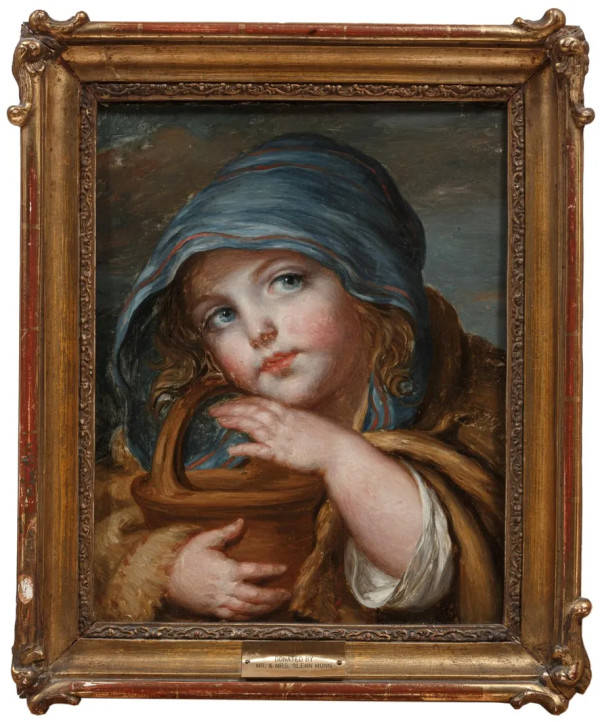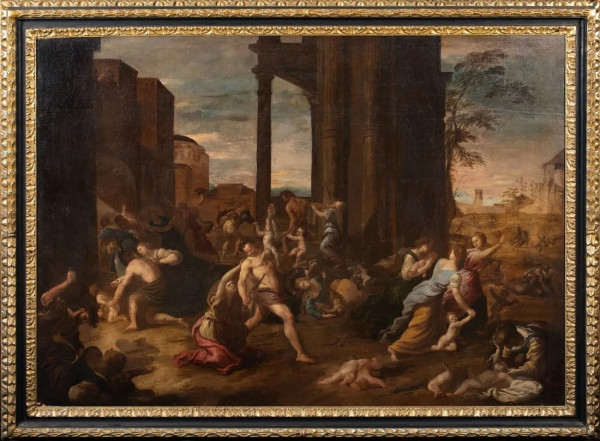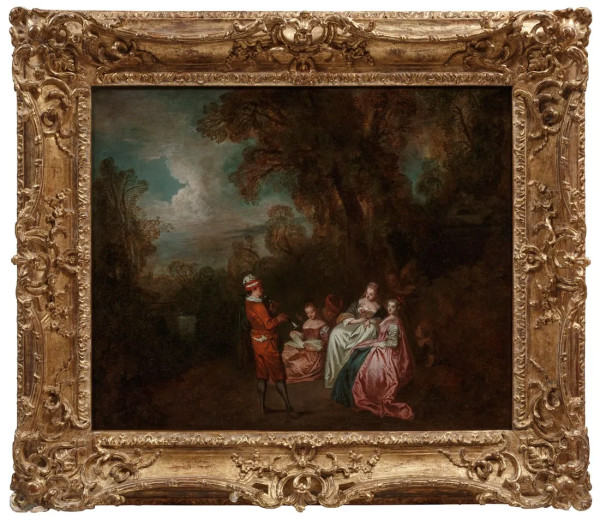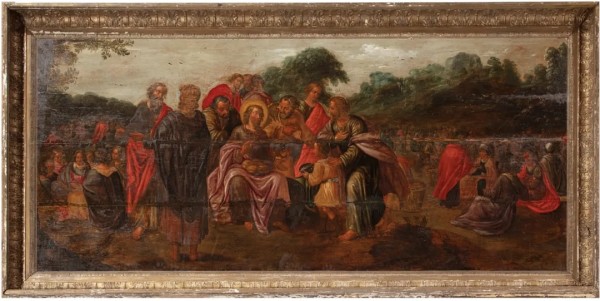- Noel Halle
- “Apollo and the Cumean Sibyl”, 1750
- Oil On Canvas
- 47 x 37 in (119.38 x 93.98 cm)
- Framed: 53.75 x 46.25 in (136.53 x 117.48 cm)
- Inv: 1102 Von Schmidt Famil...
Circle of Noel Halle (French, 1711-1781), "Apollo and the Cumean Sibyl", oil on canvas,
Ovid (Metamorphoses 14:130-153) tells how the Sibyl of Cumae, in southern Italy, was loved by Apollo.
He bribed her by offering to prolong her life for as many years as there were grains in a heap of dust, in return for her embraces.
She refused him and although he kept his word, he denied her perpetual youth, so she was commanded to centuries as a wizened crone.
The grandson of the Rouen artist, Daniel Halle (1614-1675), and son of Claude-Guy Halle, Rector of the Academy of Painting (1652-1736), Noel Halle was the pupil both of his father and of Jean Restout, his brother-in-law. In 1734 he won the second Prix de l’Academie, in 1736 the Premier Prix, and studied at the French Academy in Rome from 1737 until 1744 under the direction of Jean-Francois de Troy. Agree at the Academie in 1746, Halle exhibited at the Salon until 1779. In 1748 he became an academicien with The Contest of Minerva and Neptune (Paris, Musee du Louvre) and was elected Adjunct Professor in the same year and Professor in 1755. In 1770 he was appointed Inspector of the Gobelins factory and in 1775 was given the responsibility for reorganising the French Academy in Rome, for which task he was reward by being made a Chevalier of the Order of Saint Michael. He became Rector of the Academy of Painting in 1781, the year of his death.
An artist of incontestable gifts, Halle was at ease in all genres. As a history painter, he received royal commissions for work at the Trianon, Choisy, the Petit Trianon, and for the Batiments; he worked for the Gobelins factory (Atalanta and Hippomenes, 1765, Saint-Etienne, Musee d’Art Moderne), for the city of Paris and for the King of Poland. He painted a number of religious works, such as St Vincent de Paul Preaching for the cathedral of Saint-Louis at Versailles (1761, in situ) and St. Peter Delivered from Prison for the church of Saint-Pierre de Saint-Chamond (1764, in situ), decorated ceilings and friezes in private houses, painted portraits and genre scenes, which are lively and realistic (The Education of the Rich and The Education of the Poor, 1765, Private Collection).
The atmosphere of his compositions is airy and luminious, with architecture and perspective well observed, and his style is easily recognizable by the sense of movement i the action of his characters, with their curving, elongated outlines and huge gnarled reddish hands, and by the ease with which he disposes them within the composition. His colour, occasionally sombre and roseate at the beginning of his career, quickly lightened, becoming more luminious, with pastel tonalities mingling with sharp, vivid tints. His female faces, oval, and even chubby, are characteristic: a retrousse nose, hair tucked up in a kerchief tied high on the head, while his happy, dimpled and rosy cherubs are veritable signatures. Halle’s rapid touch and heavy impasto in the oil sketches become freer and more fluid in the completed works. A prolific draughtsman, he uses red chalk, charcoal heightened with white, pen and wash and wash on its own worked with pencil point, water-color, and most happily pastel.
